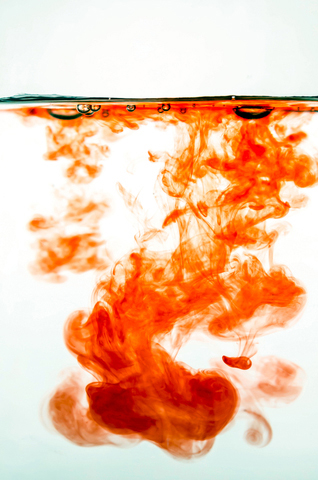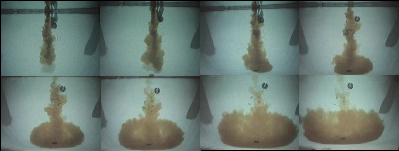Exploring the ‘Acid Column’

When I conduct seminars at pool and spa industry trade shows, I regularly get asked about the validity of a water-management technique known widely as the “acid column†approach.
Those who believe in this application method say that if acid is poured into a swimming pool in a concentrated area – producing what adherents variously call a column, slug, well or cloud – the alkalinity of the water will be drastically reduced, but the pH will not drop as much as it otherwise would. By contrast, they say, if that same volume of acid is added by walking it around a pool and evenly distributing it throughout the water, the pH will be preferentially lowered with only a minor decrease in alkalinity.
That might sound desirable and therefore good, but those who believe this application method makes any real sense are simply wrong, because it’s a plain and simple fact that a given amount (or “doseâ€) of acid added to a fixed volume of water (the pool) will result in identical reductions of both pH and alkalinity every single time, no matter how the acid is added. That’s science, and it can easily be demonstrated at poolside by anyone with a test kit.
In fact, the only real chemical difference between the two addition methods is the time required for the acid to blend throughout the entire pool.
DIGGING DEEPER
So what really happens when acid is added in a concentrated fashion to a pool? Well, because acid is noticeably heavier than water, it sinks to the bottom and flows to the lowest part of the pool. If that lowest part happens to include an operating main drain or an operating suction-side cleaner, the concentrated acid dose winds up in the circulation system.
In fact, we have performed experiments adding acid in this manner and have verified that this method can indeed create conditions where the pH of the water at the bottom of the pool is less than 2.5.
Although the movement of the water will eventually dilute and blend the acid into the rest of the pool, the initial contact of concentrated acid can potentially etch the plaster it touches and attack the circulation system through which it flows. Even adding several smaller “slugs†of concentrated acid will result in this pooling of acid on the bottom – and if you don’t believe it, just add dye to the acid and watch. It’d be a fun science experiment if you didn’t have to worry about uniformly etching the bottom of the pool!
| The photographs depicts two quarts of “dyed†acid that were added to the deep end of a pool with the equipment shut off. The acid puddle remained in place for more than 30 minutes. |
Of course, etching the plaster and eating the components of the circulation system is generally considered a bad thing. Still, the proposed treatment process (that is, “slugging†the acid) encourages this potentially damaging treatment technique, all in the name of theoretical, unfounded attempt at chemistry manipulation. And even if the technique worked (which it doesn’t), would it be worth the risk?
A BETTER PATH
So what is the right way to add acid to a swimming pool? If it must be added manually, the best way to do so, I believe, is to pre-dilute the acid and then add it by walking it around the perimeter of the pool, pouring it evenly, close to the surface – and slowly enough to minimize splashing. When added in this way, the acid blends throughout the pool water faster, and the pool is protected from areas of low pH.
In pools treated with the acid dilution and distribution method just described, the lowest pH levels measured next to the plaster were in the 7.1-7.2 range. And once the acid addition was blended throughout the water, the end-result pH/total alkalinity reductions were identical, no matter how the acid was added.
It is time to lay this acid-column nonsense laid to rest and use a scientifically sound application technique that really works. It’s yet another way we reduce our risk of damaging pools under our care.
Kim Skinner began his work in the pool industry 40 years ago as a service technician and then as an employee and eventually manager of Skinner Swim Pool Plastering of Sun Valley, Calif. He later became president of Pool Chlor, a chemical service firm with offices throughout the Southwest. Along the way, he has performed both laboratory and field research on pool-water chemistry and on the relationships between water chemistry and pool plaster surfaces. For a more detailed report on the the acid-column myth, click here.











